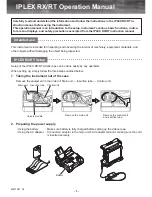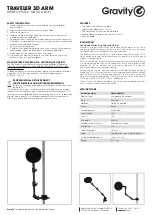
to newborn screening. In the clinic they can provide an early warning of
cochlear deterioration and hearing loss, although their usefulness is limited
above 4kHz.
DPOAEs allow testing at higher frequencies and at greater stimulus
intensities than the TEOAE method. This has made DPOAEs valuable
in the complete clinical assessment of cochlear status. The availability of
stronger stimulation allows DP emissions to be recorded in patients with
moderate hearing losses and this can be useful in establishing the extent
of cochlear pathology. Recordings can be concentrated on selected
frequency ranges.
When used with lower stimulus levels, DPOAEs are just as sensitive to
slight hearing losses as TEOAEs, so they can be used for screening of
newborns and adults. The test can take longer than for TEOAEs because
each frequency has to be measured in turn, but this is acceptable with
adults in return for higher frequency information.
Recording otoacoustic emissions below 2kHz can be more difficult with
DPOAEs in noisy situations than with TEOAEs.
Otodynamics recommends a combination of both tests and a range of
stimulus levels for clinical investigations.
Introduction
CHAPTER ONE
Introduction
14
Summary of Contents for Otoport Advance
Page 296: ...CHAPTER THIRTY TWO Index 296...















































